What will evolve the next-generation wireless standard 'Wi-Fi 6' that will not lower line speed even in a crowded environment of radio waves?

The next generation communication standard "IEEE 802.11ax" of wireless LAN has been renamed to " Wi-Fi 6 ". National Instruments summarizes the outline of what evolves from the current IEEE 802.11ac (Frontier Wi - Fi 5).
Introduction to 802.11ax High-Efficiency Wireless - National Instruments
http://www.ni.com/white-paper/53150/
Wi-Fi 6 is the theoretical maximum transfer rate of 9.6 Gbps, which will further speed up from 6.9 Gbps of Wi-Fi 5. However, in addition to merely speeding up, many mechanisms are adopted that make it difficult to reduce the communication speed even if multiple terminals are connected at the same time.
· Backward compatibility
Wi-Fi 6 is a wireless communication standard succeeding Wi-Fi 5, basically compatibility with lower communication standards of Wi-Fi 5 or lower is secured. In addition, the biggest improvement is that the communication speed in "high density environment" where the use of radio waves is crowded is up. Compared to Wi-Fi 5, the goal is to "raise the average throughput by at least 4 times" per user.
Comparison with Wi - Fi 5 will be as follows. Wi-Fi 5 is compatible only with 5 GHz band, whereas Wi-Fi 6 is characterized by both 2.4 GHz and 5 GHz correspondence.
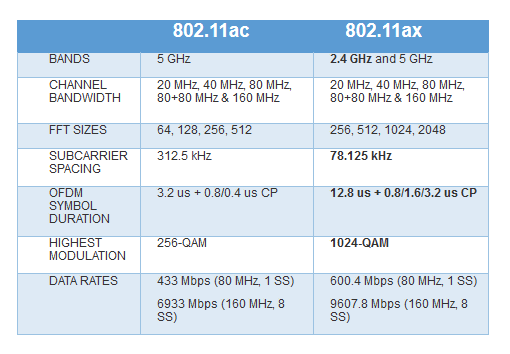
The FFT size becomes four times, the number of subcarriers also increases, and the interval between subcarriers is narrowed to one quarter. This will preserve the existing channel bandwidth.
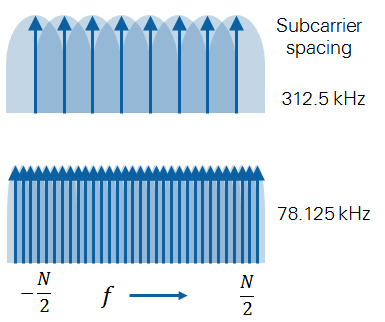
· MU-MIMO
As with Wi - Fi 5, it supports Wi - Fi 6 "multi - user MIMO ( MU - MIMO )" which enables simultaneous connection without switching communication by using different radio waves when connecting to multiple terminals. For Wi-Fi 5, beamforming, which only supported up to 4 STAs (terminals), has doubled to a maximum of 8 in Wi-Fi 6. Also, different MCS (Modulation and Coding Set) can be set for each STA.
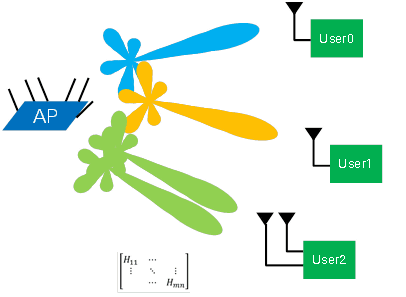
In beamforming, "Trigger Frame" which requests channel operation for MU - MIMO operation is introduced. The AP receives beamforming feedback information from all STAs and performs MI - MIMO operation.
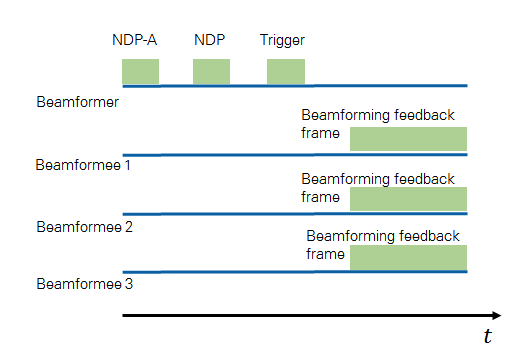
OFDMA
The "OFDMA (Orthogonal Frequency Division Multiple Access)" technology used in 4G communication for mobile is also adopted to multiplex so that it can be used by more users with the same channel bandwidth. Simultaneous connection with more terminals is enabled by RU (Resource Unit) which divides OFDM (Orthogonal Frequency Division Multiplexing System) used in Wi-Fi 5 into sub-channels finer by channel bandwidth .
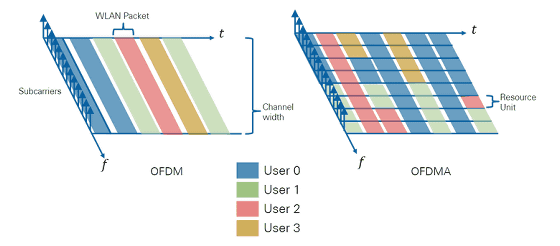
In "high density environment" inefficient conflicts will arise over channel usage. With OFDMA, for the finest subchannel, up to nine users can be handled per 20 MHz bandwidth.
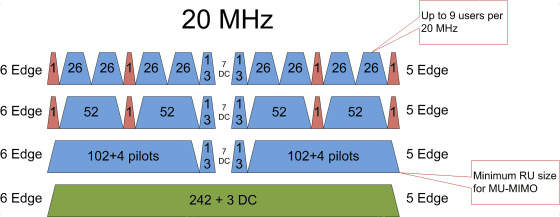
Twice as long as it is 40 MHz.
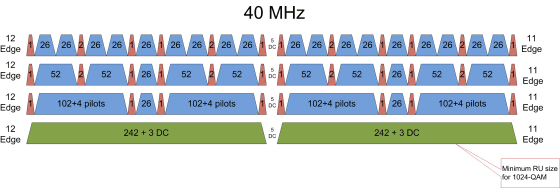
- Uplink processing of multiuser operation - In addition to information such as the number of spatial streams, OFDMA frequency, and RU size allocation, each terminal can increase or decrease the transmission output of each terminal in the trigger frame Whether power control information is also transmitted. By doing this, you can increase the transmission output to distant terminals. In addition, the AP can issue a trigger frame that supports transmission start timing and frame duration to all terminals, so that transmission from all users is completed at the same time. Therefore, there is the advantage that there is no delay when transmitting in order for each terminal.

· TWT
With Wi - Fi 6, you can use "TWT (Target Wake Time)" which the AP controls competition among STAs by exchanging information on the duration of the activity. As each terminal goes to sleep until the arrival of each TWT, the power saving performance increases.

With Wi-Fi 6, various new technologies are adopted to "high-density environment". This is aimed at increasing the number of IoT terminals such as smart home appliances and the like will increase more and more, even in environments where "many terminals compete for lines within a narrow range" such as apartment houses and airports, There seems to be an advantage that the speed is difficult to fall down.
Although it is still Wi-Fi 6 of draft 3.0, the Wi-Fi Alliance plans to start the Wi-Fi 6 authentication program by the fall of 2019. Supported routers such as ASUS ' RT - AX 88U ' have already been announced, and terminals such as notebook PCs and smart phones compatible with Wi - Fi 6 will emerge within 2019 and are expected to be put into practical use.
Related Posts:
in Hardware, Posted by darkhorse_log







